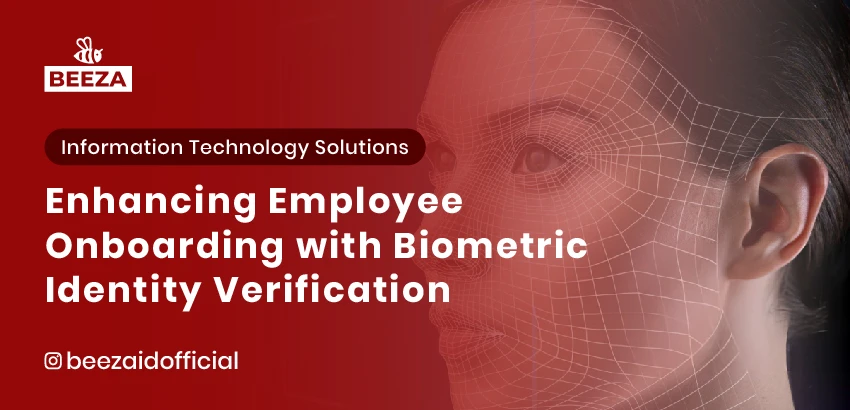
Employee onboarding is a crucial phase for any organization, as it sets the tone for new hires and ensures compliance with company policies. Verifying employee identity is not just a regulatory requirement but also a critical step in maintaining organizational security. Accurate verification ensures that only authorized individuals have access to company resources and sensitive information.
In addition, a seamless verification process improves the overall onboarding experience for new hires, making them feel valued and reducing unnecessary delays. This is especially vital in industries like finance, healthcare, and IT, where security and accuracy are non-negotiable.
Challenges in Traditional Onboarding Processes
Manual identity verification processes often face several limitations, including:
- Time-Consuming Procedures: Verifying physical documents manually can take days, delaying the onboarding process.
- Human Error: Mistakes in data entry or document evaluation can lead to compliance risks.
- Limited Scalability: Handling large volumes of new hires simultaneously can overwhelm HR teams.
- Security Risks: Traditional methods are more vulnerable to fraud and identity theft.
How Biometric Identity Verification Helps
Biometric identity verification leverages unique physical or behavioral characteristics, such as fingerprints or facial recognition, to confirm an individual’s identity. This technology provides:
- Speed: Biometric systems verify identities in seconds, reducing onboarding time.
- Accuracy: Biometric data eliminates the risk of errors associated with manual verification.
- Enhanced Security: Biometric characteristics are nearly impossible to forge, ensuring a secure verification process.
- Scalability: Automated systems can handle a high volume of verifications simultaneously, making them ideal for large organizations.
Additional Applications of Biometric Verification in HR
Beyond onboarding, biometric identity verification can be applied to other HR functions, such as:
- Time and Attendance Tracking: Biometrics ensures accurate logging of work hours, preventing time fraud and enhancing payroll accuracy.
- Access Control: Biometric systems can restrict access to sensitive areas or systems, improving overall workplace security.
- Contractor and Vendor Management: Verifying the identities of third-party workers ensures compliance with security policies and reduces risks.
By incorporating biometric verification across these areas, organizations can streamline operations and build a secure, efficient workplace environment.
Case Study
Problem
A multinational corporation struggled with onboarding delays due to manual identity verification processes. These delays not only frustrated new hires but also caused inefficiencies in resource allocation.
Solution
The company implemented Beeza’s biometric identity verification system, integrating it into their onboarding process. The system used facial recognition to verify employee identities quickly and securely.
Result
The onboarding process time was reduced by 70%, and the company experienced a significant improvement in new hire satisfaction. The HR team also reported fewer compliance issues and greater efficiency in managing new employee data.
Key Benefits of Biometric Verification for Onboarding
- Faster onboarding processes with minimal delays.
- Reduced risk of fraud and identity theft.
- Improved compliance with industry regulations.
- Enhanced employee experience, leading to higher satisfaction and retention.
Future Trends in Biometric Verification
As biometric technology evolves, its applications in HR and beyond will expand. Emerging trends include:
- Integration with AI: AI-powered biometric systems can detect anomalies and provide real-time alerts, further enhancing security.
- Mobile Biometric Solutions: Smartphone-based verification allows employees to complete onboarding remotely, offering greater flexibility.
- Multi-Modal Biometrics: Combining multiple biometric modalities, such as facial and voice recognition, ensures even higher accuracy and security.
Organizations that adopt these advancements early will be better positioned to stay ahead in a competitive market.
Beyond Onboarding: The Role of Biometrics in Building Trust
Biometric identity verification not only simplifies onboarding but also fosters trust within the organization. Employees feel reassured knowing that advanced security measures are in place to protect their personal data and the company’s assets. This sense of security contributes to a positive workplace culture, where individuals can focus on their roles without concerns about data breaches or unauthorized access. In turn, this strengthens the organization’s reputation as a safe and reliable employer.
Conclusion
Biometric identity verification is revolutionizing the way organizations onboard new employees. By integrating this technology, companies can ensure secure, efficient, and seamless onboarding experiences.
Ready to upgrade your onboarding process? Contact Beeza today for innovative biometric verification solutions!